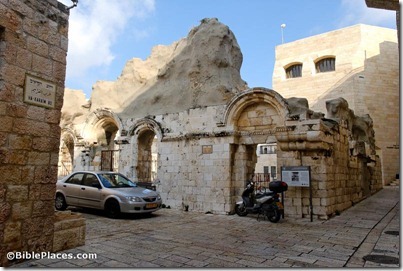Archaeologists working at Acco have discovered harbor remains and four shipwrecks from the early 19th century.
Deane Galbraith summarizes a new article in which Yigal Levin rejects the identification of Khirbet Qeiyafa as Shaaraim and proposes instead that it is the Israelite encampment.
Bible History Daily has a short story on a new exhibit about Famous Americans Who Made Holy Land Tours. Featured tourists include Mark Twain, Herman Melville, and Theodore Roosevelt.
The Muriel and Jeremy Josse Collection of Holy Land Maps includes more than 250 maps of late 19th- and early 20th-century Palestine and the African continent.
Harvard University is returning to archaeology in Iraq after nearly a century, but they’re doing so without touching the ground.
National Geographic has word (and photos) of the Oldest Pharaoh Rock Art Rediscovered in Egypt.
Bible History Daily posts more than a dozen high-res images of “King David’s Tomb.” You need a subscription to read Jeffrey Zorn’s related article, but the images are available to all. And if you ever teach about the subject, you should grab the nicely colored drawings from Weill’s excavations while they’re available (below the photos).
The city of Jerusalem has approved plans for rebuilding the second of two domed synagogues in the Old City. Both were destroyed in the 48 war, and the Hurvah Synagogue was rebuilt several years ago. A donation of $12 million is launching the rebuilding of the Tiferet Israel Synagogue.
For a look at what’s going on in the broader world of biblical studies in the past month, head over to the Carnival.
HT: David Coppedge
Photo from the Pictorial Library of Bible Lands

One thought on “Weekend Roundup”
Deane Galbraith summarizes a new article in which Yigal Levin rejects the identification of Khirbet Qeiyafa as Shaaraim and proposes instead that it is the Israelite encampment.
I notice that he argues that Khirbet Qeiyafa was built after the time of David (who he implies didn't exist), and that the author was simply assigning the encampment as the setting while inventing the story of David and Goliath whole cloth. What's the basis for that claim? And does the identification of Khirbet Qeiyafa with the encampment from the story require that the story be fiction?